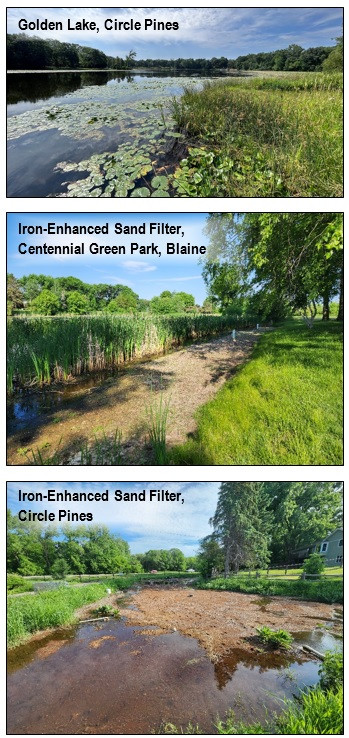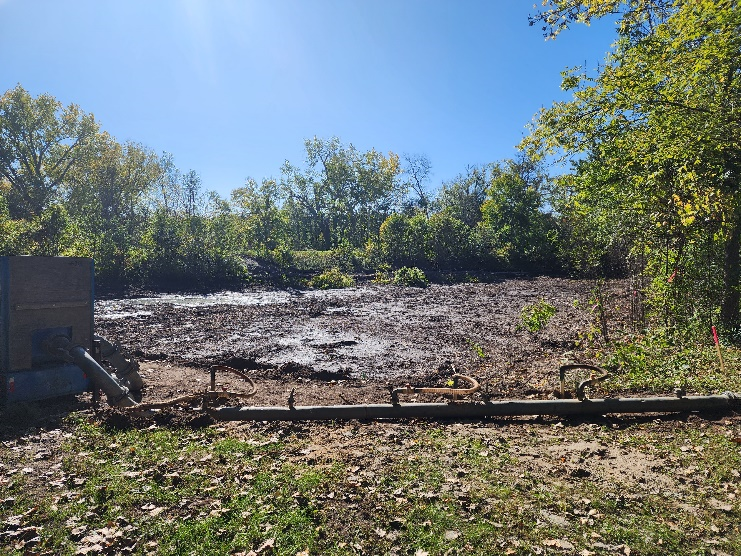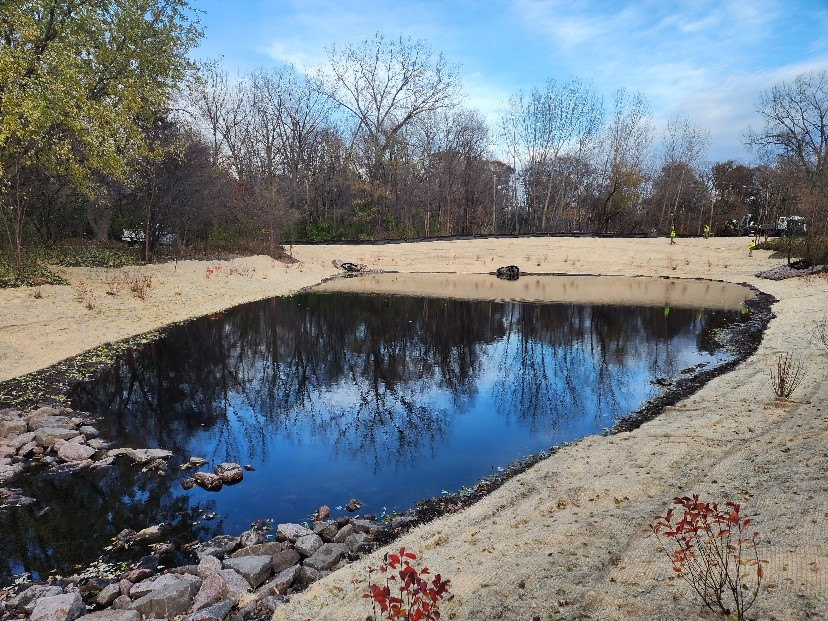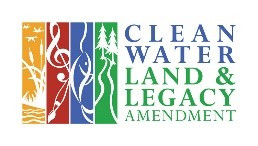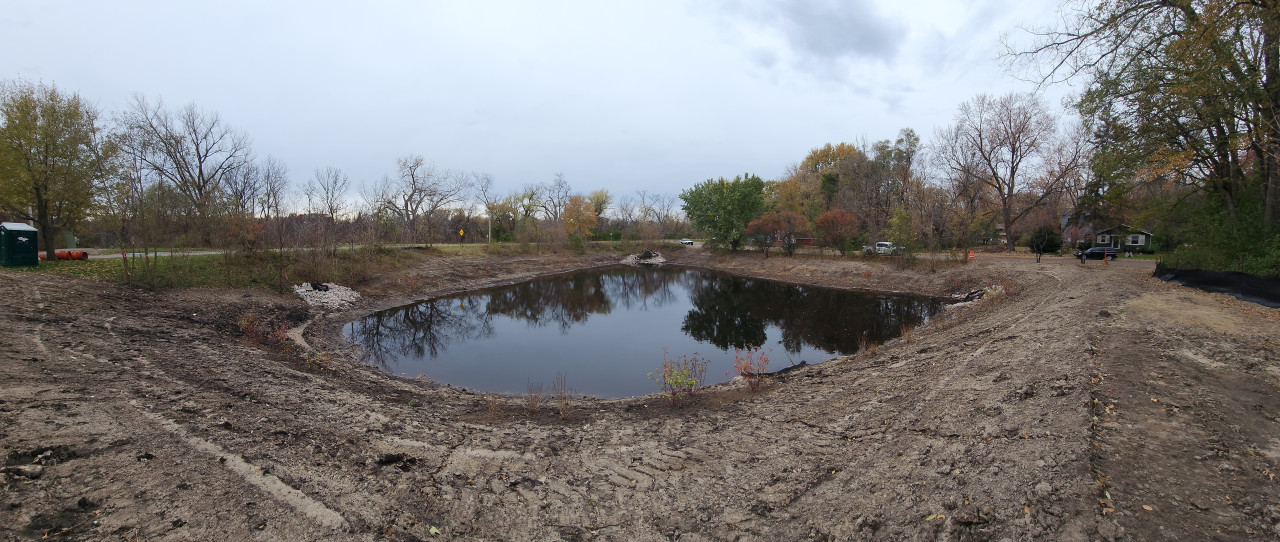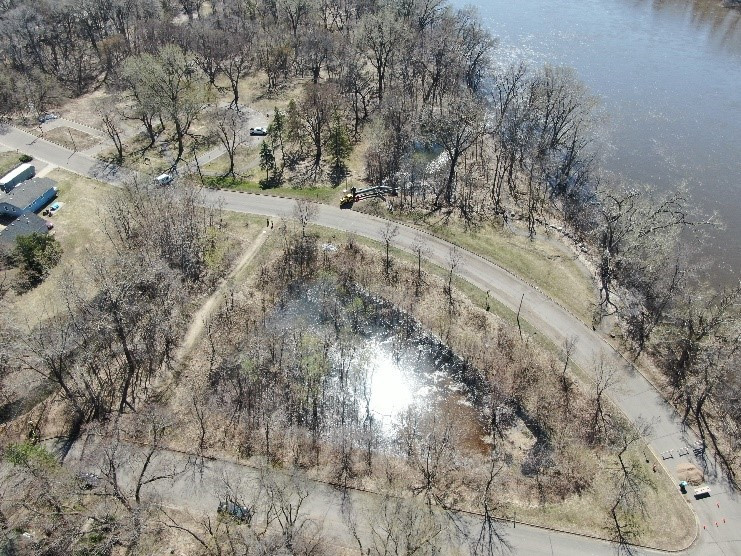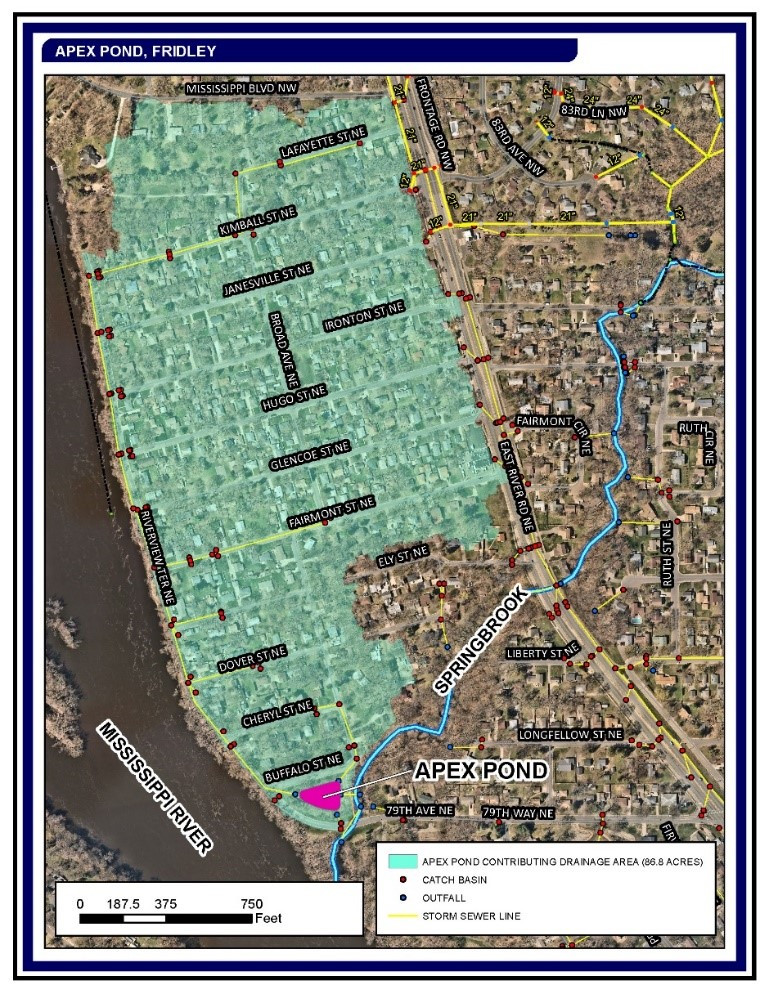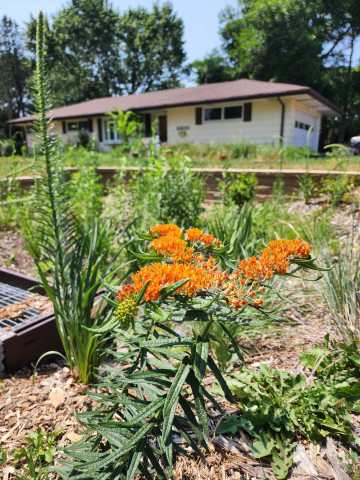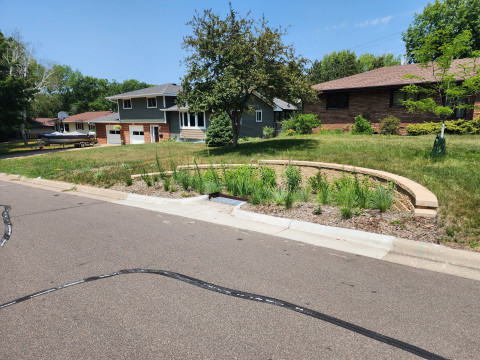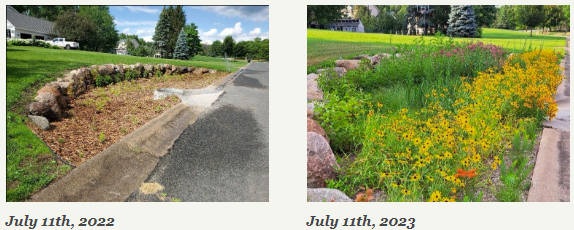The proposed removal of Golden Lake from Minnesota's impaired waters list was highlighted in a recent Board of Water and Soil Resources (BWSR) article that underscores the importance of Clean Water Funds (CWF) for measurable water quality improvement. ACD secured two CWF grants for iron-enhanced sand filters (IESF) to reduce phosphorus reaching Golden Lake, located in Circle Pines, MN. Iron-filings mixed throughout the sand, capture phosphorus from stormwater passing through the filters. One IESF was installed in Centennial Green Park (2015) in the City of Blaine, and the other was installed in the City of Circle Pines (2019). Both projects were identified as cost-effective phosphorus reduction options in a Golden Lake stormwater retrofit analysis completed by ACD.
The proposed delisting of Golden Lake is a testament to the hard work and collaboration by many, including ACD, the City of Blaine, the City of Circle Pines, and the Rice Creek Watershed District. Mitch Haustein, ACD's Stormwater and Shoreland Specialist, assisted with the projects and was interviewed for the article. Click here to read the full article from BWSR that also includes brief stories about proposed delistings for 6 other Twin Cities area lakes, 1 Wright County river reach, and 1 Winona County stream segment.
For more information contact Mitch Haustein, Stormwater & Shoreline Specialist, at
